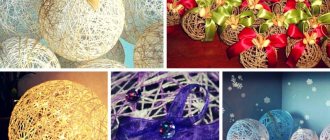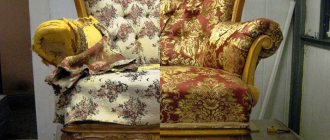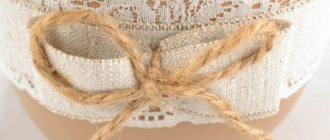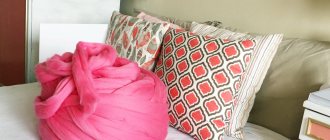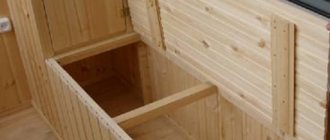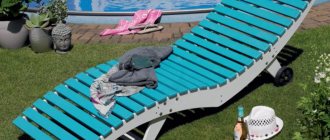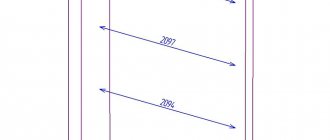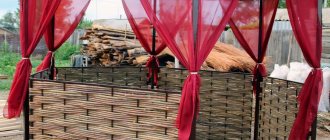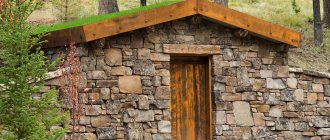How to make a bedspread or blanket with your own hands: options
When you choose a method for making a blanket with your own hands, keep in mind that it should support the overall concept of interior design, combining with the wallpaper, style of furniture and color of curtains. Today's most popular options for making a bedspread on a bed or sofa include:
- Knit a blanket using a hook or knitting needles;
- Sew from numerous scraps (patchwork);
- Make a blanket from handmade pompoms;
- Sew a double-sided bedspread from two types of fabric.
Let's take one look at photos of interesting examples and step-by-step instructions for using all of the above methods.
Patchwork style bedspread
Of particular interest to most housewives is a blanket sewn from fabric scraps, made in the Patchwork style. For sewing, a large number of multi-colored textile scraps are used, which are subject to general requirements (porosity, ability to absorb moisture and odors, environmental performance).
It is better to choose fabric from the following types:
- Jacquard fabric.
- Fur, you can choose both artificial and natural look.
- Velor is a very popular material today, which is easy to wash and dries quickly.
Suitable for sewing plaid and velvet. Almost all types of textiles presented are great for making beautiful bedspreads for a bed or sofa. After selecting the consumables, the next step is to prepare a template for the parts. According to a pre-prepared pattern, blanks for the future blanket are cut out.
Sew all the flaps into a single fabric. For winter insulated bedspreads, you will need to create two sides from textile scraps, between which the filler is placed.
Cozy DIY knitted blankets and bedspreads
A knitted blanket looks very cool and truly cozy in the interior. It generally brings a touch of rustic or bohemian style, although in a solid color and a tight knit it can look quite modern.
When creating a knitted blanket with your own hands, you don’t have to stick to one pattern.
You can make your own adjustments, play with the color of the threads and turn your plans into reality without limiting yourself in anything. Several such ideas for creativity with knitting needles and crochet are presented to you in the following photos. Notice how impressive and stylish a blanket made with large knitting with your own hands looks.
Knitted blanket: taste, color...
A beautiful knitted blanket is appropriate in the interior of any room. Complete with decorative pillows made of bright yarn, it helps to create rich accents in the living room.
. A soft cape made of fluffy yarn, thrown over an armchair or sofa in your home office, creates an atmosphere of warmth and comfort. An exquisite crocheted lace blanket that successfully complements the bedspread in the bedroom gives the room a romantic feel.
It is worth noting that in the bedroom a knitted blanket is much more common than in other rooms. Try and experiment with different textures, shapes and materials by laying a blanket across the bedspread on the bed. See how the knitted creation fits seamlessly
into a textile bedroom ensemble.
Stunning hand-knitted blankets add subtle charm and uniqueness to the interior. Of course, creating one of these masterpieces will take a lot of time, but you won’t need any special skills like those needed when knitting clothes. WESTWING designers advise you to use a little trick : knit a blanket using the simplest technique, using spectacular yarn. In this case, the finished product will look luxurious and presentable.
Before you begin the process, you need to decide on the texture and color of the threads. The blanket should become an expressive element of decor, without getting lost among the walls and furnishings of the room. At the same time, it must fit into the interior without violating the laws of harmony. Ask what psychological effect the chosen color has on a person. This will help you choose sunny, red and terracotta shades for a blanket in a room where there is not enough warmth and comfort
. The cool tones embodied in your creation will fill the room with the desired coolness on a summer day.
No less important than color is the composition and structure of the yarn. Fluffy mohair threads will be ideal for warm blankets that will keep you warm in bad weather. Cotton and viscose yarn is perfect for a sophisticated crocheted summer blanket.
If you doubt your skill, you should give preference to fleecy or textured yarn, for example, boucle. Even a simple pattern made in purl or stockinette stitch will look very attractive in the finished product. The original models are no less
knitted from thick textured yarn. In addition, their creation will take much less time, especially if you use the technique of dropped loops.
Luxurious blankets made from multi-colored yarn, provided the shades are correctly combined. They can be knitted or crocheted - it all depends on your skill and preferences.
A simple knitted blanket can be decorated with fringe, pom-poms, tassels, and other decorative elements. Thanks to them, the products acquire uniqueness and cute charm. An impeccable model that combines complex patterns and noble status yarns does not require special decorations. Such a blanket, which is a well-deserved source of pride for a talented craftswoman
, will become a worthy decoration of any room.
How to knit a beautiful blanket with knitting needles
Choosing a pattern is already half the battle to knit a beautiful blanket. Moreover, even very simple drawings will look great.
Yarn selection
An important question that interests everyone is which yarn is best to knit a blanket from. I looked at the reviews of needlewomen on the forums: some knit from acrylic, others from wool, in the end many came to the conclusion that it is best to take acrylic in half with wool. My friend Svetlana, whose blankets I showed, uses exactly this kind of yarn.
A blanket made from acrylic alone is very light, soft and not very warm, while a blanket made from wool is a bit heavy and prickly.
Therefore, yarn containing both is an ideal option for knitting blankets.
Buy threads from the brand you like; personally, I love ALIZE. Consumption for a blanket measuring 100x150 cm is from 600 to 1500 grams, depending on the pattern and the number of folds of the thread (knitted in one thread, two, or four).
- You can also knit from plush yarn, from “grass” - look at examples of such fluffy blankets.
- We select the knitting needles according to the thickness of the threads, knitting the sample. Typically numbers from 6 to 14 are used.
- It is better to take circular knitting needles - it will be more convenient to knit a large fabric on them. I haven’t had straight knitting needles for a long time now; I knit all my things only on circular ones.
- Just don’t buy knitting needles with thin fishing line, knitting on them is a pain, you need to choose ones so that the thickness of the fishing line is approximately the same as the diameter of the knitting needle itself.
How to knit
You can knit a blanket with a single piece of fabric, or you can knit it from different squares, which are then sewn together, or from strips.
We knit a sample pattern and calculate the loops that need to be cast on the knitting needles. But that is not all. You need to immediately think about how to make the edges of the blanket neat and beautiful.
There are two options: knit the border immediately from the first row or tie the edges of a ready-made blanket.
How to knit a blanket
I tried to remember the last time I knitted. The mind wandered and got lost in the memories of high school.
I figured that knitting was a skill like riding a bike—you’ll remember it when you need it—and I started looking for instructions on hand knitting. Of what I watched, I liked the Apartment Therapy video the most. No giant knitting needles made of plastic pipes (yes, yes, there is such a thing), no jewelry knitting patterns with your fingers and, most importantly, no instructions for an hour in a boring voice.
It took me watching the video more than once, with pauses and sometimes at slow speed, but these instructions worked.
Initially, I cast on 16 loops on my hand and, yes, my hand was enough. As a result, 16 loops gave the blanket a width of about a meter.
How to knit a blanket beautifully
The first few rows and the same number of the last ones also need to be knitted in a pattern for the border.
For knitting a border, any dense pattern is suitable: garter stitch, pearl stitch, etc., or even two different ones at the same time, as in the example in the photo above.
Isn't it very beautiful?
In the second case, it is more convenient to crochet the finished blanket around the perimeter with single crochets: two to three rows.
If desired, you can decorate the edges of the blanket not only with tassels, but also with pom-poms.
How to knit a blanket with knitting needles
- Garter stitch. A technique related to universal methods. It is with teaching this technique that any practice begins. A distinctive feature of this method is that the entire blanket is knitted using only knit stitches. The first loop is always removed, and the last one is purl (after turning the knitting, they again begin to create facial loops).
- Stockinet. Also refers to very common techniques. After the first row of edge stitches, all rows are knitted alternately: the front row is replaced by the purl row.
- Elastic is rarely used for knitting bedspreads, but is sometimes used as an additional element. The creation of an elastic band can occur according to the pattern 1*1, 2*2, 3*3, where the corresponding number of facial loops alternates with the same number of purl elements.
A more suitable model for creating bedspreads is English or Polish elastic, which is characterized by a soft texture, elasticity, and excellent heat retention.
The most beautiful rugs and blankets are knitted with a pattern or ornament, for example, braids, diamonds, plaits, the features of which can be seen in the photo of a knitted blanket.
Instructions and knitting patterns can always be found in the public domain. Experienced needlewomen can create individual patterns for knitting bedspreads.
Very simple beautiful blanket
This plaid looks very beautiful, and is knitted almost exclusively with knit stitches.
How to knit
- The first 8 rows are a garter stitch border (in all rows: both knit and purl - knit).
- Next, we distribute the loops according to the patterns: at the beginning and end of each row there are 8 border loops.
Main pattern:
- all odd rows are knit stitches.
- Rows 2, 4, 6 – slip three stitches without knitting, knit three.
- Rows 8, 10, 12 – all knit.
Types of patterns for motifs
- Motifs connected from the corner. Their combination will give the product a 3D volume effect and originality to your room.
- Grandmother's or Spanish square. This is a common knitting technique for similar items. As a result of painstakingly crocheting patterns from yarn of several colors, the result is a warm, cozy and aesthetically pleasing bedspread.
- Tunisian crochet patterns. Tunisian knitting is denser. The fragments look like rags, and the bedspreads look like patchwork products.
The fragments that make up the bedspread can be triangular, square, hexagonal, or even arbitrary in shape. They just need to be carefully connected.
They can be of different sizes, with dense satin stitch, with openwork patterns and even with voluminous flowers.
What types of bedspreads are there?
The main division of bedspreads occurs according to the tool with which they are knitted - crocheted or knitted.
You can choose exactly what you like best. The most common crochet bedspread pattern is the granny square. It does not require calculations, because for a canvas of any size the beginning is the same.
- How to choose slings?
- Features of renting a one-room apartment
- Cooking gas stove
The most common pattern for knitting a bedspread is satin stitch. This is the most basic pattern, which is the first thing people learn when learning to knit.
Colors and sizes
The dimensions always depend on the area of the sofa or bed on which the blanket will be placed.
And the colors can be very diverse. The main thing is that the color of the blanket does not stand out from the overall style of the room.
You also need to take into account the “practicality” of the chosen color and the frequency of use of the product. If the product will be used frequently, then it is better to look towards black, gray, mustard, red, brown, etc.
There are quite a lot of options in which you can create the desired blanket model.
If we are talking about handmade work, then there are 4 ways to make a product:
- In a straight line.
- Circular.
- Diagonal.
- Assembled from individual squares.
Models and size
In order to make a product yourself, you must first determine what size and shape your blanket will be.
When choosing a size, you should take into account the shape and dimensions of the upholstered furniture; the bedspread should be knitted a little larger than the sofa itself. The blanket can be knitted in the following shape:
- Round
- Square
- Rectangular
- For a corner sofa
You can also knit a blanket from squares. When making a product, you need to take into account several nuances:
- All elements of the future bedspread must be knitted in one size
- Consider the composition and density of the yarn
- Choose threads that match in color
- Knitting a baby blanket should only be done from natural yarn.
What shape and material the blanket will be knitted from depends on your individual preferences.
Options for creating blankets
The thickness of the product depends on the type of yarn. For knitting thick blankets, for example, wool or wool blend yarn is suitable. Also a popular and unusual option would be a blanket made from scraps of old sweaters. This style is called Patchwork.
For crocheting a blanket, the “Afghan” technique and Bavarian knitting are suitable.
The Scandinavian method or double-sided knitting is well suited for knitting a blanket.
Plaid with hands
You usually knit (or “weave”) a blanket using super thick yarn by hand. However, you can do without knitting needles and a hook when creating a blanket with your own hands from ordinary yarn - then the product turns out to be openwork, very openwork!
Blankets made from unusually thick natural wool yarn, mainly merino, are winning more and more hearts of needlewomen (and not only) with their interesting, catchy appearance. When you see such a blanket for the first time, you might think that this is a designer item that cannot be made independently. In fact, knitting a blanket from thick yarn is not difficult. You can use special giant knitting needles, or you can weave it by hand. Most often, a thick blanket is knitted in a simple stitch, without patterns. The hand knitting technique is no different from the usual one: the basic loops are first thrown over one hand, then transferred to the other, which serves as an incoming knitting needle.
You can learn how to knit a blanket by hand from the video.
When you use your hands instead of knitting needles, knitting turns into a kind of game: you must admit, it’s fun to cast on stitches on your hands! Well, if you involve a child in an unusual activity, the blanket will turn out doubly “warmer.”
On average, it takes about 3 kg of yarn to create a thick yarn blanket. For a product about a meter wide, cast on 15 loops (a hand is enough for them). In terms of time, if it takes about 5 days to knit a blanket from regular yarn, then it takes only 1.5 hours to weave a blanket from thick yarn by hand. And this is only for beginners! Advanced needlewomen spend less than an hour on the process.
How to choose the right blanket
Despite the abundance of instructions and videos of knitting blankets, many do not dare to make the product themselves. And they are faced with the question of what to look for when buying a blanket so that the item is of high quality and lasts a long time.
Pay attention to the quality certificate. The label must indicate the composition, manufacturer, and care instructions for the product.
Pre-read the reviews about the seller and the specific blanket.
Value for money of the product. Take your time with the purchase: study the assortment, compare the cost of similar products from different sellers.
A correctly selected blanket will become a stylish accessory in the home that will delight you for a long time.
Red plaid 3 D
Crochet blanket from 3 d squares. Crochet granny square 3 d effect. You will need a 4 hook for a blanket measuring 2 by 2.20 m, 8 by 9 squares. Pekhorka merino yarn. I combined the motifs during the knitting process. I immediately hid the knots.
I have yarn, what to do next?
And then you need to calculate how many knitting loops are needed. You can do this yourself by calculating how much yarn goes into a square, for example 10*10 centimeters, and, based on this, calculate how much is needed for a large blanket.
You can also make calculations using special online calculators, but be sure to take into account the pattern you will be knitting with.
You should practice knitting the chosen pattern in advance, on a small number of stitches, and start a large amount of work only when the trial version turned out well and you are completely satisfied.
Product for newborns
Knitted blankets and blankets for newborns should be made from hypoallergenic and high-quality materials. It is optimal to use yarn with a combination of acrylic and wool or merino threads. The yarn should have a soft texture, the threads should be elastic and durable.
It is recommended to purchase specialized formulations for young children.
The product of medium density is standardly made with dimensions of 89x96.5 cm. For production you need 4 skeins of yarn (100 acrylic), knitting needles for circular knitting 5.0 mm. After face knitting, the blanket is decorated according to the diagrams with descriptions. On the front side you need to add 6 loops and tie the product in a circle. The work is completed by closing the loops and fixing the threads in the product.
How to knit a baby blanket?
Children's blanket knitted and crocheted is made from high-quality and hypoallergenic yarn. It is important to consider the presence of allergies to wool and, if necessary, replace the composition. The option of cotton products is universal.
It is recommended not to use yarn with fluff and long pile.
Before manufacturing the product, you need to draw up a sketch; in addition to the classic model, you can include images of fairy-tale characters, and add pom-poms, buttons and buttons to the model for transformation. The products are universal and can be used as a carpet for children, an envelope, or a cape.
The list of popular product models includes:
- in the shape of a hare with ears;
- in the form of an owl;
- in the shape of a bear;
- complemented by a hood.
After drawing up a sketch and taking measurements, the volume of yarn is calculated, a knitting technique and a diagram are selected with a description on the specialized website. After completing the work step by step, the loops are closed, the threads are removed and the model is smoothed.
From thick yarn
A DIY chunky knit blanket is suitable for decorating your home and creating an original accent accessory in your interior. The product is woven using knitting needles or by hand.
To weave a blanket without knitting needles, merino yarn is required.
The knitting technique is simple, without openwork inserts. The basic loops are thrown over one hand, then transferred to the other and gradually knitted into fabric. For a product with a width of at least 1 m, you will need to cast on 15 loops. The work is completed in 1-2 hours.
We knit a baby blanket
Every young mother faces the question of how to knit a baby blanket? This issue should be approached with full responsibility. To do this, you need to choose high-quality soft yarn that does not prick and does not cause allergic reactions.
Read here - How to knit a bedspread - a detailed description of how to knit or crochet a bedspread with your own hands (100 photos)
It is recommended to carry out the work directly using knitting needles, then the product will turn out soft and airy.
The Internet provides a huge number of photos of knitted blankets for children, after studying which you will choose a beautiful and exclusive option for yourself. This blanket will keep your baby warm in cold weather.
How much yarn do you need for a blanket?
Before knitting a blanket, you need to calculate the volume of materials used depending on the size of the product, the selected patterns, and the type of yarn. The average volume of raw materials reaches 1.5-3 kg. Experts recommend purchasing materials with a small supply. Depending on the size of the threads and the technique of making the product, knitting needles for knitting a blanket are selected.
Independent calculation of materials is performed according to the following scheme:
- the dimensions and area of the product are determined;
- a sample model is knitted from 1 skein of yarn;
- then the area of the sample is calculated and multiplied by the length of the threads;
- the result obtained must be divided by the area of the sample.
The volume of yarn can be affected by the pattern for the blanket, the yarn for knitting (thread thickness, composition), and the inclusion of additional elements, so it is recommended to adjust the data to the model.
Details
Kinds
Blanket models are presented in different forms (bedspreads with ears, a hare's face or a hood, stripes, and also buttons for transformation, for the winter season with lining, from intertwined stripes, rectangular, personalized with lining, textured, etc.). Depending on the production method, such a product is produced:
- By machine method using a knitting machine or on specialized equipment.
- Hand knitted using a hook or knitting needles.
The differences between these types of execution are obvious - the machine version usually requires actions using thinner yarn, a huge number of different loops, many patterns and weave options. Such a product will be created much faster, unlike its analogue, which is made by hand. The product made on production equipment will be distinguished by accuracy of manufacture and uniformity of design. Thanks to well-functioning mechanisms, it is possible to produce knitting of any complexity and the required future ornament.
The manual knitting mechanism is outwardly unique - until the process of knitting the bedspread is completed, the degree of density of the created loops can vary. At the same time, it is not always as perfect as with machine knitting, but after washing the fabric generally looks as uniform as possible. Handmade work is not limited to any technology, which means it makes it possible to realize all the creator’s ideas, and it is also beneficial to directly show the texture and desired pattern in the best possible way.
Manufacturing materials
Yarn for creating blankets can be very different, but practically no metallic shiny threads are used, which will darken the overall texture of the product and will also prick the body. Quite often, to create such a blanket, craftsmen use leftover yarn that is available, thereby making a bright multi-colored fabric. In other options, they often buy yarn from thick threads to make the product by hand. It makes it possible to make a unique blanket in a short period of time. The more popular materials used to create the models in question are acrylic or cotton, wool/wool mixture, herbal composition, as well as a mixture of acrylic and angora, wool + acrylic or mohair. Any of the presented types of raw materials are distinguished by their personal characteristics and advantages. For example, products made from herbs and knitted are characterized by softness, large volume and a comfortable feel. Wool blankets have been improved with a textile base, and therefore have become an excellent competitor to ordinary fabric blankets. Cotton options are quite lightweight, do not cause irritation to the skin and are easy to care for.
Styles and types of decor
A large knitted wool blanket is unique, and this lies in the fact that such bedspreads perfectly fit and decorate the style of every room - from strict minimalism and timeless classics to rich glamor and chic empire style. As a rule, the main idea strongly depends on the volume of the design (3D ornament, embroidery in the shape of a heart, prints) or colors. A knitted product will look more harmonious in Provence or country style, art nouveau, avant-garde, patchwork and African style, as well as boho, baroque, or art deco, loft and Arabic style.
